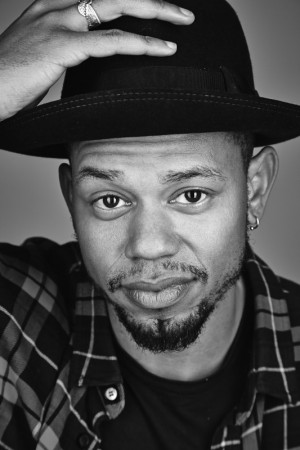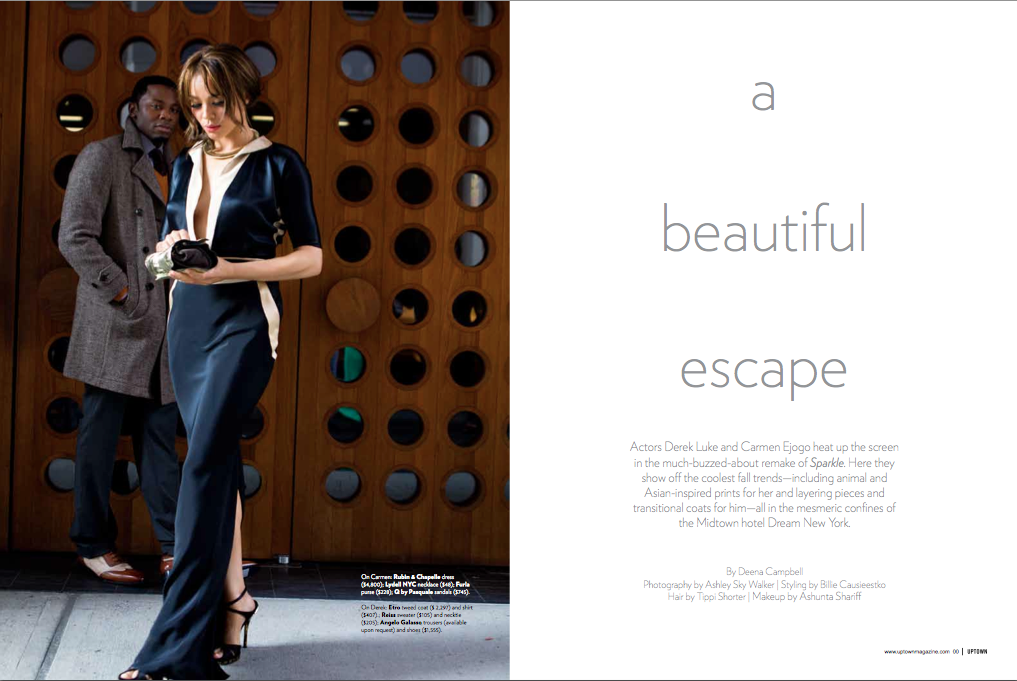 I believe that the sun shines brightly on the African American future, just as I ultimately believe that this country’s best days are still ahead of it. I believe in the cliche that the future is what you make it. I believe in the power of belief itself, and that faith in a righteous cause is in time rewarded. Those black American’s who will accept it have before them a righteous cause in which to believe. It is the cause of black nationalism but it is also the cause of black patriotism. It is the reclamation of black culture from the hands of degenerate cultural influences and amoral corporate interests. It is the understanding that, whether we originally chose it or not we have 400 hundred years of blood and sweat invested in this country and are only now coming to understand that we have both the right and the ability to lead it. Barack Obama, whether he remains in office but another one and a half years or another five and a half years, will not be president forever. Let his ascendency not be the end of The Ascendancy of Black America. Let it be but another great step forward on the way to the promised land that King saw long before.
I believe that the sun shines brightly on the African American future, just as I ultimately believe that this country’s best days are still ahead of it. I believe in the cliche that the future is what you make it. I believe in the power of belief itself, and that faith in a righteous cause is in time rewarded. Those black American’s who will accept it have before them a righteous cause in which to believe. It is the cause of black nationalism but it is also the cause of black patriotism. It is the reclamation of black culture from the hands of degenerate cultural influences and amoral corporate interests. It is the understanding that, whether we originally chose it or not we have 400 hundred years of blood and sweat invested in this country and are only now coming to understand that we have both the right and the ability to lead it. Barack Obama, whether he remains in office but another one and a half years or another five and a half years, will not be president forever. Let his ascendency not be the end of The Ascendancy of Black America. Let it be but another great step forward on the way to the promised land that King saw long before.
The dream of Martin Luther King, Jr. is the vision that has propelled black America to this fateful moment in time, just as it has guided America towards the fuller realization of the spirit of freedom and equality contained in her founding documents. King’s dream that one day “little black boys and black girls will be able to join hands with little white boys and white girls as sisters and brothers” calls us to remember that even as black Americans our ultimate allegiance in this world is to the human race as a whole, recognizing that in God we are one human family. This was the vision of Dr. King and this is the conclusion drawn by our founding ideals as illuminated in the simple words that “all men are created equal.” The election of President Obama was indeed striking proof of the power of these ideals as they have matured and developed throughout our collective American experience, culminating in in the compelling story of a single man who found himself poised to scale the heights of history in an election which justified the faith that her citizens and the world have placed in America as the single greatest beacon of freedom and opportunity on earth. It was therefore easy to think, for a brief moment, that we had come to the promised land that King prophesied from his mountain top. But we have a long way to go before we come to that place. For King did not pursue a primarily political agenda; though he fought segregation, though he tried to see to it that all Americans, black and white, could have jobs if they were willing to work, and though he strove to turn America away from rash wars waged over seas, he had a higher cause than politics for which he struggled. Neither was his aim primarily social, for although he persevered in the effort to bridge the gaps between whites and blacks and more broadly all people everywhere, he had a higher calling than even this. Martin Luther King, Jr. waged a spiritual battle, against sin itself if you will. He wanted to remind people that there is only one truth, one power and one moral absolute at the end of the day and that is that of love. He wished to return love to the center of America’s consciousness, and to rally the righteous behind it’s banner. But as he said:
“In speaking of love at this point, we are not referring to some sentimental emotion. It would be nonsense to urge men to love their oppressors in an affectionate sense. “Love” in this connection means understanding good will…we speak of a love which is expressed in the Greek word agape. Agape means nothing sentimental or basically affectionate; it means understanding, redeeming good will for all men, an overflowing love which seeks nothing in return. It is the love of God working in the lives of men. When we love on the agape level we love men not because we like them, not because their attitudes and ways appeal to us, but because God loves them. Here we rise to the position of loving the person who does the evil deed while hating the deed he does.”
Earlier in this series I briefly mentioned my white Grandfather, saying that he felt my father had committed a disgrace by marrying my mother. But I should clarify, it was not that he himself felt disgraced but rather that he felt, even in the mid-eighties, that the world would see it that way and that my father had committed a grave error by doing what he did. Nevertheless, and though my grandparents may have felt once upon a time that the reality of segregation was something that had to be accepted, I do know that that my Grandfather told my father once once with respect to black people that “they’re smarter than we are. They have to be to survive.” But though the cleverness of black people may derive in large measure from the direness of our historical circumstance, the wisdom of black people has been the hard understanding that in spite of all our wounds, and though they have been received at the hands of a people different from us, there is nevertheless reason to love our oppressors just as there is reason for us, in spite of our long tragedies, to love ourselves.
Now then is the time for us to call upon the instruments of our love, our spirit, our wisdom and our righteousness, to move the world forward. Love has overcome the divide between white and black, so too can understanding defeat the chasm between liberalism and conservatism that was truly the promise of the Obama candidacy. (Martin Luther King, Jr. loved George Wallace and Bull Connor, never disparaging them personally, so do you think we might somehow be righteous enough to do the same for Rush Limbaugh and Sarah Palin?) Love gave us music and literature and poetry to inspire Americans and people around he world for generations, so too can it inspire artistry and intellect in our own time to beat back the relentless waves of materialism, sexual gratuitousness, cynicism and moral relativism running rampant in our culture and our American society at large. Websites like Black Is are a part of the movement to reclaim our black nobility, our intellectual honesty, and to assert ourselves at the helm of American society. Every poem and every song that a child writes in the name of love and the honor of black women is a step in this direction, a declaration against the false Rap, Hip-Hop and BET culture that says we are better than what you are telling us we are. (Shout out to my girls Watoto from the Nile for really keeping it real. Google it if you don’t know.) Let us understand then that we do not need BET or big record labels to be the arbiters of our cultural expression. You can start a blog, a YouTube channel, a website and communicate a higher level of cultural consciousness to our people in whatever way you are gifted to do so. You can speak out in your church about our moral complacency and urge the people of your community to recognize that they do not have to accept Roc-A-Fella and Bad Boy records as the standard of black art and culture, not even in this time. If you have children, play for them your old Sam Cooke albums, your Motown records. Add some Miles Davis and some Duke Ellington if you have it, and you can always find some Ella Fitzgerald and some Billie Holiday if you look. And by all means, let them hear some Tupac too: let them hear “Mama’s Just a Little Girl,” “Changes,” I Ain’t Mad at You,” and and the many thoughtful and provocative RAP songs that have been and still are being made in some circles. Progress is about winning the future, not living in the past. But we cannot win the future without knowing our past. Soon black people who know their history and who understand their true importance and necessity in America will join hands and stand firm to change the cultural equation, in and beyond black America. We can only live with our ethnic hypocrisy for so long. Every time we look in the mirror, we see a man or a woman, a boy or a girl, who should be a priest of grace and righteousness, but the face we paint before the world is something less. But we are, we are meant to be, a holy tribe with a commission to do right. The opportunity to do so is coming and has come. Black America will take a stand before it has gone.





















